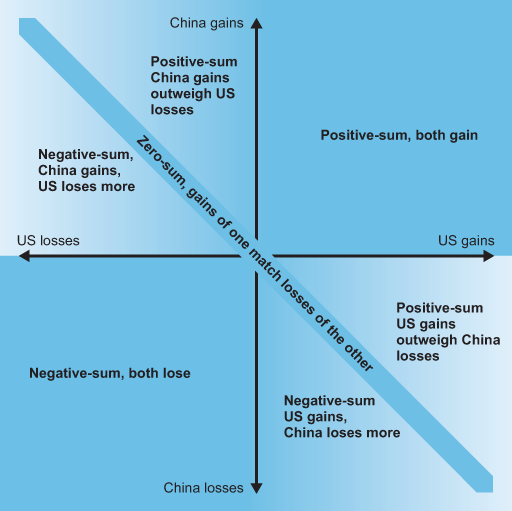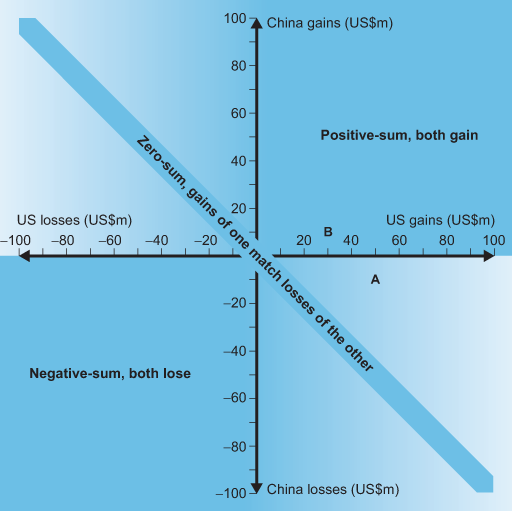5.3 Cooperation and bargaining
One of the key impressions you may have formed about China and the United States’ economic relationship (and their relationship in general) is that it is a complex one, with different issue areas eliciting different policy responses. In some issues areas, China and the United States have mutual interests and pursue these through strategies of cooperation. In other issue areas there is conflict, and gains for one side will mean losses for the other.
In Activity 8 you practised placing issues within positive-sum, zero-sum or negative-sum categories. However, not all issues fit neatly into these three categories. As was noted in Section 3, in some positive-sum issues one side’s gains outweigh the other side’s losses: not all positive-sum interactions are win–win. The sum (net gains overall) is still positive, so it’s positive-sum, but one party will lose. Similarly, there are also situations that are negative-sum (where one side’s losses outweigh another side’s gains) but not lose–lose.
Figure 20 below is the same diagram you studied in Section 3 but with these additional positions identified.
Activity 10
Now look at the version of the diagram below. You will note we have added some figures to US gains and Chinese gains, in US$m.
Let’s suppose the interaction is over a potential new trade deal. Point A has the coordinates: 50, –10. Which country gains if the trade deal places them at this point and which country loses? Why would this be a positive-sum game, and why will cooperation not happen?
Discussion
At point A, the United States is making gains (it gets US$50 million) and China loses (it gets US$–10 million). The United States’ gains are greater than China’s losses, so the outcome is still positive-sum: a net gain of US$40 million. However, cooperation will not happen because China is making a loss. Unless it is coerced to do otherwise, it will not play the game.
Now look at point B on the diagram. It has the coordinates 30,10, where both China and the United States gain. On the next page, you'll look at how countries can move from A to B through the use of side payments.


